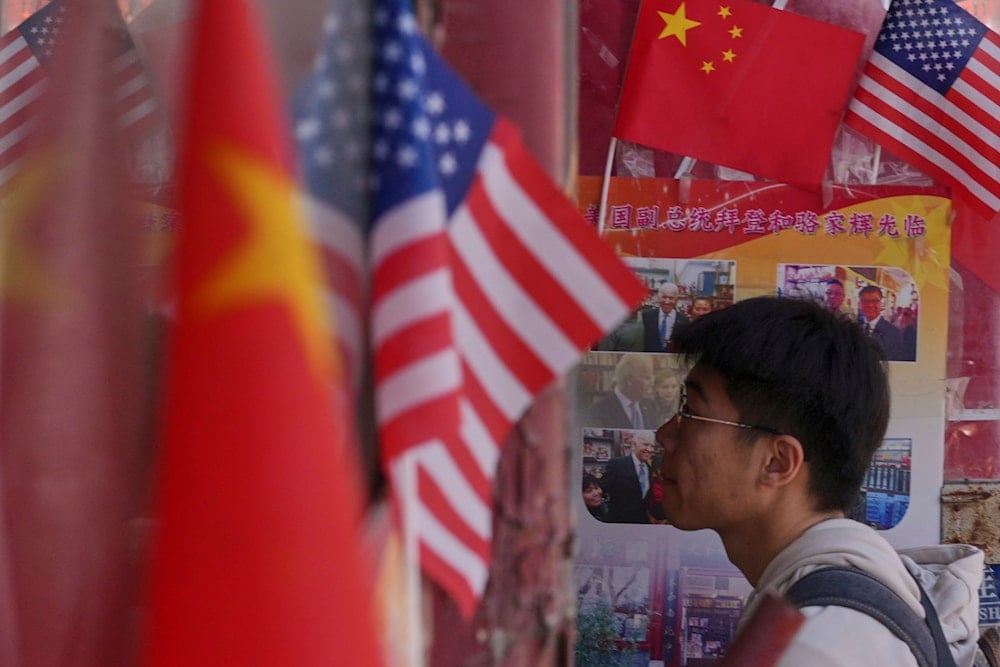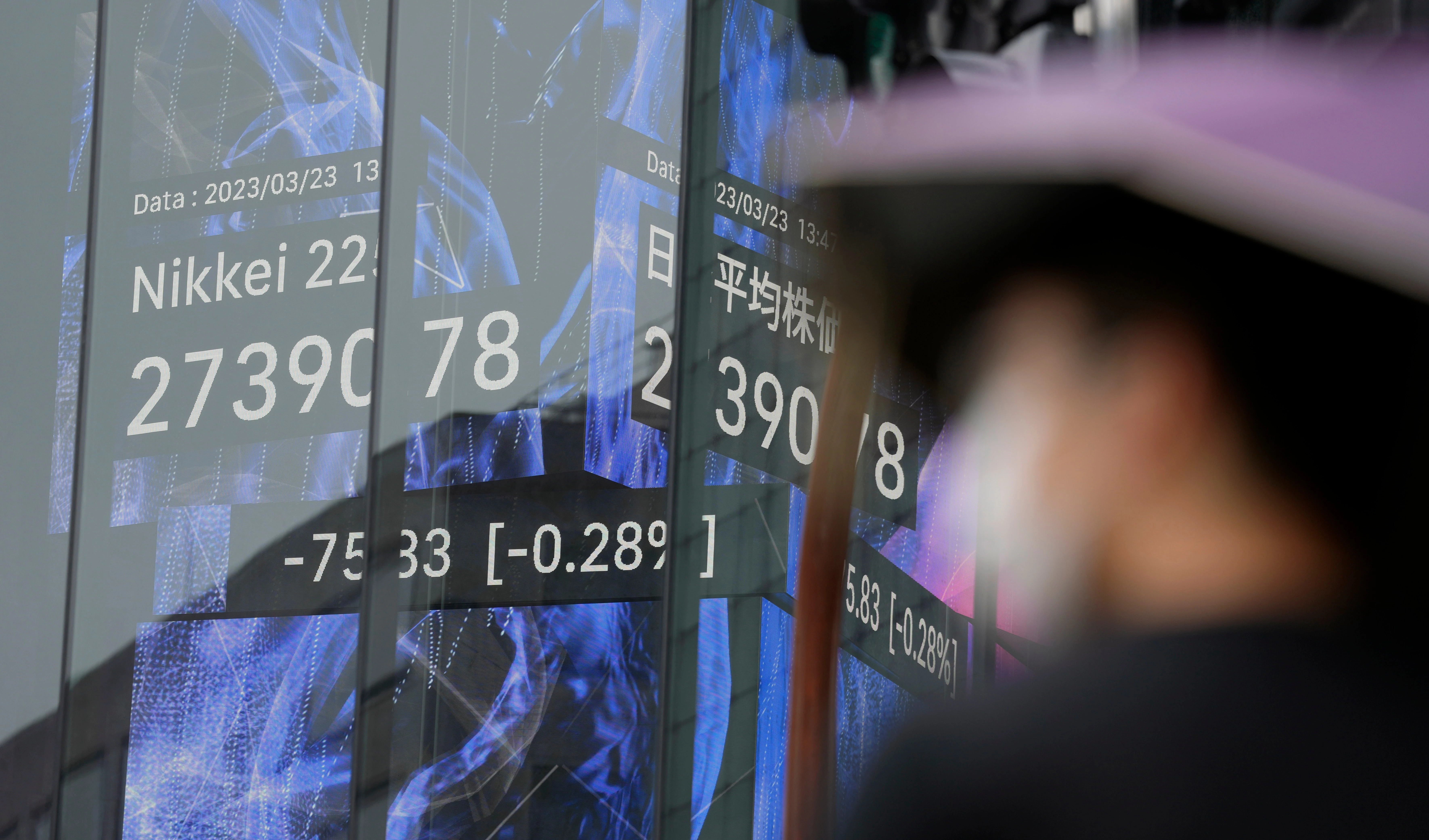US and China meet to ease trade war tensions
Senior US and Chinese officials met in Geneva for high-level trade talks aimed at easing tensions in the ongoing tariff war sparked by US President Trump’s policies.
-

A man walks into a merchandise store displaying Chinese and United States' national flags, in Beijing, on Thursday, April 3, 2025. (AP)
Senior US and Chinese officials gathered in Geneva on Saturday to hold high-level trade talks aimed at easing tensions in a tariff dispute that began under US President Donald Trump.
The conflict, which started with the imposition of sweeping tariffs by Washington, intensified as Beijing implemented firm retaliatory measures.
US Treasury Secretary Scott Bessent and US Trade Representative Jamieson Greer held discussions with Chinese Vice Premier He Lifeng, marking the first direct engagement between the two sides since the latest wave of tariffs announced by Trump last month.
Around 9:30 am local time, Bessent, Greer, and about a dozen other US officials moved swiftly through the lobby of the Intercontinental Hotel in Geneva, avoiding reporters and heading directly to their vehicles.
The Chinese delegation departed from the nearby President Wilson Hotel, accompanied by a heavy police presence that temporarily shut down roads across the city as both delegations traveled to the undisclosed venue.
Although the exact meeting site had been kept confidential, reporters confirmed that the US-China trade talks were taking place at a secure location elsewhere in Geneva.
According to Chinese state media, the negotiations officially began by late morning and were expected to continue through the weekend.
Since the start of the year, the United States has imposed tariffs amounting to 145% on Chinese imports, with some goods now facing duties as high as 245%, prompting China to retaliate with 125% tariffs on American products, creating what analysts describe as a near-total blockade of bilateral trade flows.
These Geneva trade negotiations come at a time when economic pressure between the two largest economies continues to mount, with both sides having taken aggressive stances on trade, leading to a freeze in meaningful economic cooperation.
Trump Signals Openness to Tariff Reductions
On Friday, Trump suggested the possibility of reducing tariffs, posting on social media that an “80% Tariff on China seems right” while also hinting at potential changes to existing trade policy.
However, US Commerce Secretary Howard Lutnick clarified in a television interview that the president remains interested in finding common ground but will not act unilaterally.
White House Press Secretary Karoline Leavitt reinforced that any easing of tariffs would require concessions from Beijing, underlining that Washington is not considering lifting trade measures without reciprocal steps from China.
Experts note that while deep tensions persist, the talks mark a step toward re-engagement. Bill Reinsch, a senior advisor at the Center for Strategic and International Studies and former member of the US-China Economic and Security Review Commission, acknowledged the troubled state of relations but described the dialogue as a constructive move.
Xu Bin, a professor at the China Europe International Business School, stressed the importance of the talks by noting that China remains the only country to have imposed tit-for-tat tariffs against the US, highlighting the significance of mutual engagement at this stage.
Scott Bessent indicated that the Geneva meetings were intended to ease tensions rather than negotiate a formal trade agreement, signaling a cautious but meaningful effort to reopen channels of communication.

 3 Min Read
3 Min Read










